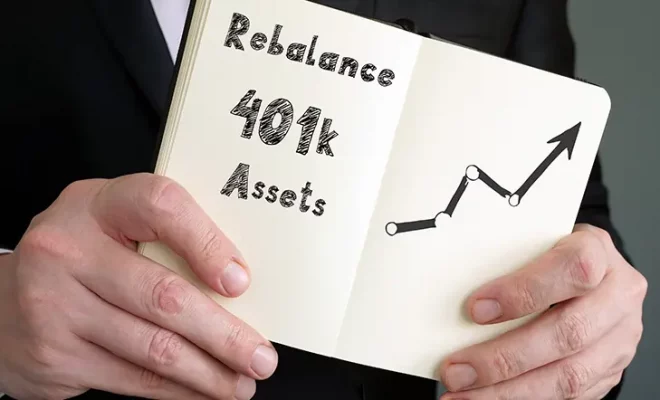FIRE (Financial Independence, Retire Early) as a Retirement Strategy
As you begin your 9 to 5 job, it is highly recommended that you also start working on your retirement plans. A journey where you consistently work hard to accumulate a significant corpus for your non-working years of life. Earlier, people worked hard to save until their official retirement age, usually 65 years. However, given the changing mindset of the working population and the adaptation of the phenomenon ‘life is short’, most of the U.S workforce is shifting towards early retirement. In 2020 and 2021, this shifting paradigm further gained momentum in light of the specter of the deadly COVID-19 virus. As per the latest government report, more than 2.7 million people aged 55 or above are considering retiring much earlier than they previously imagined because of the pandemic. People now are increasingly looking at money to fulfill their dreams and live a comfortable life rather than only safety and security.
Whether you wish to retire early because of work, boredom, global health crisis, changing life perspective, or anything else, you need to be financially independent to fund your retirement. Typically, there is no mandate that you should work till you reach retirement age. No law states that you have to work until you are 65. You can retire whenever you want to. However, the risk in retiring early is that you should have a retirement nest egg to sustain your living expenses during the prolonged retirement period. You have to ensure that your savings last longer. And with the increasing life expectancy and steeply rising inflation, this has become even more of a challenge.
That said, retirement is subjective. For some, handing over their resignation by the age of 60 years is early retirement, whereas for others early retirement could be as early as in their 50s. Few others can consider giving their employer a notice by the age of 40 an accomplishment. Whatever your notion of early retirement is, the truth is, it is possible. Early retirement is feasible even at 40, provided you adopt a wise strategy for it. Following an extensive guide is a means to gain financial independence and live a financially secured early retired life. If you have doubts and do not have a clear financial strategy to navigate early retirement, you can reach out to a professional financial advisor to guide you through this upcoming phase of your life.
When you leave the workforce early, you put extra pressure on your investment portfolio. This is because your Social Security withdrawals do not start until the age of 62 years, and withdrawing early from your retirement savings accounts like a 401(k) or an IRA (Individual Retirement Account) comes with an additional 10% penalty. Further, delaying your Social Security benefits can help you increase your paycheque significantly. As per studies, an average retiree can amplify their Social Security balance by 50% if they do not withdraw any Social Security benefits until 70 years. Given these penalties and benefits, the burden of assuring financial security in case of early retirement depends on your investment portfolio.
A wise strategy that can help you retire early and comfortably with a large retirement corpus is FIRE. FIRE, which stands for financial independence, retire early, is a way of living life during the early, working years to gain financial security sooner than anticipated, ultimately seeking early retirement. The goal is to attain early retirement by using a combination of a high savings rate and a prudent lifestyle. Most FIRE practitioners aim to retire at 40 years or even earlier.
Here is everything you should know about FIRE and whether it is a suitable financial strategy for you:
Table of Contents
What is financial independence, and how does it relate to the FIRE philosophy?
FIRE – Financial Independence, Retire Early – is a financial movement characterized by extreme savings, investment, and a frugal way of living. FIRE retirement focuses on making drastic lifestyle changes to maximize your savings and become financially independent sooner than traditional retirement savers.
The FIRE philosophy came to light in the 1990s and has built its support base ever since. In the past decade, it has become increasingly popular amongst millennials, encouraging them to save aggressively and retire early, being driven by the concept of ‘life is short’.
If you want to retire early, you can consider adopting the FIRE approach. This means that you would dedicate up to 70% of your income to savings and live frugally so that you can be financially independent and retire early. The primary purpose of following the ‘financial independence, retire early’ philosophy is to achieve financial freedom to live a life of your choice and not one mandated by your needs. Once your savings reach 30 times your annual expenses or approximately $1 million, you can quit your job or retire from work altogether. Some reports estimate that an average retiree can fulfill 19 years of retirement expenses with a retirement corpus of $1 million. But this seems contradictory in the light of the increased life expectancy, where an average retirement period that would previously last 13 years is now nearly 25 years, which is double.
However, the definition of FIRE retirement has expanded in recent years and focuses on financial freedom rather than only early retirement. In the novel concept of FIRE, retirement implies shifting from a workplace you dislike to a career or lifestyle you enjoy. Being a 40-year-old retiree with a lifetime ahead can appear like a daunting proposition on its own. By adopting the FIRE strategy, you can shift your perspective by focusing on vital things in life rather than money and work. The method enables you to achieve financial freedom where your life functions per your wishes and not by the need to earn money. You can adopt the FIRE approach to achieve financial independence early in life and continue working in some capacity. This will give you dual benefits. You can work as you like while earning a small sum to sustain your living expenses during the early 40s and 50s to ensure you do not outlive your savings.
Alternatively, if you strictly aim to retire in your 30s or 40s, the FIRE retire early approach allows you to generate a passive income to support an early retirement until Social Security and penalty-free retirement withdrawals begin.
What is the withdrawal rule in the FIRE retire early strategy?
To cover the living expenses in case of partial or full early retirement, the FIRE strategy recommends using the 4% withdrawal rule. You can make small withdrawals from your accumulated savings, generally around 3-4% of the total balance each year. The 4% withdrawal rule assumes a 7% investment return per year and a 3% inflation rate, which might not be right for all retirees.
The 4% rule was tested between 1926 and 1992 and found apt for retirees with an average retirement horizon of 30 years. However, for FIRE retirees, the 4% withdrawal rule might require some adjustments to be effective. As a FIRE strategy follower, your retirement horizon could be 50 years or more, given the increasing life expectancy rates and early retirement at 30 years. Hence, to make your savings last a lifetime, you might need to customize the 4% withdrawal rule.
Some strategies to use when modifying the 4% withdrawal are:
- Use forward-looking predictions to ascertain future returns of your portfolio and modify withdrawals.
- Use a realistic time horizon to determine your withdrawal rate. The 4% withdrawal rule has a 36% chance of success in a 50-year retirement horizon and an 82% chance of success in a 30-year retirement period.
- Minimize investment costs to benefit from the 4% withdrawal rate.
- Invest your money in a diversified portfolio comprising the U.S. and international assets rather than focusing only on U.S. stocks and bonds.
- Use a dynamic spending strategy and increase your spending each year only by the inflation rate. For instance, spend 4% of your savings in the first year post-retirement and increase your withdrawal rate according to the annual inflation rate to get an inflation-adjusted withdrawal amount each year.
What are the different types of FIRE retirement strategies?
The different versions of the FIRE retirement strategy describe the lifestyle its followers are willing and able to maintain. Primarily, there are three alterations of the FIRE strategy:
- Lean Fire: Lean FIRE strategy focuses on stringently following the concept of minimal and lean living to save a high amount and retire as early as possible. This means you will live on the bare minimum and save most of your income. You will also live modestly during initial retirement years to achieve FIRE sooner.
- Fat Fire:The fat FIRE approach favors a slightly more indulgent and less frugal living approach than lean fire. If you follow this FIRE strategy, you would not be adhering to a restricted lifestyle like the lean FIRE approach. You will only make small sacrifices during the accumulation phase and even in retirement. Hence, you will require to save for a much longer duration to maintain your living standard in retirement. This implies you will take longer to achieve FIRE and retire.
- Barista Fire:The Barista FIRE strategy adopts a more expansive and modern view of the traditional FIRE tactic. As per the Barista FIRE approach, you save strictly but only up to an amount sufficient to retire from your primary job. Instead of retiring completely, you seek part-time work, open your own business, freelance, choose another more complacent work environment, which is more satisfying than your previous job but could pay less.
The FIRE approach you adopt depends on your individual preference, financial goals, standard of living, retirement lifestyle expectations, and more.
How to approach the FIRE strategy?
Here are some steps that you can follow to achieve FIRE financial independence, retire early:
- Make a financial plan that suits your goals: Before you start to follow the FIRE retirement strategy, it is critical to understand your life and financial goals. Decide on whether you wish to take early retirement or continue working in a limited capacity even after retirement. Also, evaluate what age you want to retire at and what kind of lifestyle you aspire to live in non-working years. Moreover, estimate your monthly retirement expenses by factoring in inflation and life expectancy. Assess if you will have other income sources during retirement. Once you know these relevant details, it will be easier to determine how much you need to save, whether you need to increase your income, and when you can finally retire from work. As you begin your FIRE retirement journey, continually monitor your progress and modify your plan, if necessary.
- Focus on spending and not your earning: The base of any FIRE strategy is to minimize expenses. Hence, when adopting this financial approach to seek early retirement, aim to reduce your expenses irrespective of how high or low you earn. It is easier for people with lower income to reduce their spending as they are more accustomed to a frugal living than people who earn high salaries. The primary concept of financial independence is reducing expenses as much as possible. It is not about saving the money you have left after spending, but about saving first and spending later. Look at every financial facet of your life and assess where you are overspending or making unwanted purchases. Change your lifestyle spending.
- Stay away from debt: The success of the FIRE strategy depends on high savings. However, debt becomes a big hassle in maximizing savings. Hence, if you want financial independence, aim to stay clear of any debt – home loan, credit card bills, car loan, etc. If you already have a debt burden, eliminate the high-interest debt first, such as credit card bills, personal loans, student loans, etc. Interest payments consume a large share of your savings, hampering your long-term savings accumulation. Alternatively, if you have much-needed, low-interest debt like mortgage loans, you can aim to boost your income and generate rental income to cover the interest payments.
- Increase your savings gradually: Adopting the FIRE retire early strategy is a step-by-step process. If you are new to the concept, it is best to start saving a small sum to keep yourself motivated and eventually increase your savings rate as you get accustomed to minimal living.
- Boost your income: The FIRE financial strategy focuses on saving aggressively, enabling you to gain financial independence sooner. One way to do this is by increasing your savings, and another medium is to increase your income, whether through a secondary job, freelancing project, etc. Additional income sources can help you attain the financial independence to retire much earlier. However, be mindful of the lifestyle inflation trap, where your spending increases with a rise in income. The FIRE strategy is successful only if you redirect your extra money towards retirement savings.
- Investing wisely: If you want to retire early and live a financially secure life, it is not sufficient to only save money. You have to invest your money wisely. Ideally, if you are saving 50% of your income, you should start by investing 15% of these savings for retirement and gradually increase your investment percentage. However, before you invest your money, ensure you pay off your consumer debt and have at least 3-6 months of your expenses saved as an emergency reserve. Typically, in the FIRE retirement approach, you follow an aggressive investment strategy and deploy more funds in stocks that generate high returns. Aim to create a diversified portfolio with majority investments in shares but holdings in bonds, alternative assets, etc. The sooner you start saving and investing, the higher the benefit, owing to the power of compounding.
Some other tips that can help you reach FIRE sooner:
- Maximize your retirement account contributions, such as a 401(k), and avail employer-matching contributions.
- Use tax-advantaged accounts like a Roth IRA, etc., to save your retirement money.
- Invest in low-cost securities that align with your risk tolerance and financial goals.
- Consider including alternative assets like real estate investment trusts (REITs), commodities, etc., to diversify the portfolio and generate high returns.
- Learn a new skill to improve your income sources.
- Minimize taxes by using smart strategies like tax-loss harvesting, charitable contributions, etc.
When do you need to begin your FIRE retirement journey?
There is no mandate regarding when to begin your FIRE journey. The sooner you plan and start saving, the higher the savings, and the earlier the retirement. Anyone of any age can begin the FIRE journey by following the advisable steps like limiting expenses, living frugally, eliminating debt, etc. However, to ensure you have achieved the FIRE stage, you must do an in-depth review of your finances.
Whether or not you can retire early and how early you can retire depends on how much you earn, save, invest, and spend. Further, consider your retirement standard of living, any inheritance, income in retirement for other sources like pensions, etc., before finally considering taking a break from work.
What are the benefits of the ‘financial independence, retire early’ strategy?
The primary benefit of adopting the FIRE strategy is that it initiates a conversation about retirement. You think about your future financial security and plan for it. You know where you stand financially and where you should be to live the lifestyle you want in retirement. You are in a better financial position to set targets and achieve them.
FIRE gives you the financial freedom and independence to make your life choices. Once you achieve FIRE, you work because you want to and not because you need to. Accomplishing the FIRE stage will help you retire early and spend more time doing things you love, such as traveling, spending time with loved ones, pursuing your passion, taking up a hobby, etc.
Apart from this, FIRE teaches you disciplined saving and investing, enabling you to become a responsible person. You learn sound money management and mindful spending.
Is the FIRE retirement strategy a good financial strategy for everyone?
As a financial strategy, FIRE is not for everyone. However, it does teach some important financial lessons that are critical to everyone. The first barrier in the strategy is that you require a significantly large sum of income to save an amount that enables you to retire by your 40th birthday. Moreover, the FIRE tactic fails to help you if you have a considerable amount of debt. Also, frugality and minimalist living is easier said than done. To achieve the FIRE stage, you have to make drastic lifestyle alterations and significant sacrifices.
That said, FIRE is not a complete failure as a financial strategy. Retiring in the 30s and 40s is indeed rare and extremely difficult to accomplish. However, implementing some FIRE financial tactics can help you achieve your retirement goals no matter how much you earn or when you plan to retire. The lessons from the FIRE strategy apply to everyone, especially if you struggle with money management. Even if you do not want to retire early, the FIRE principles, like eliminating debt, more savings, etc., can improve your financial security and retirement readiness.
To summarize
Overall, the adoption of the FIRE strategy depends on your financial status and goals. However, several elements of this strategy are applicable and beneficial for everyone, irrespective of how much you earn, your motivation or monetary goals. The objective is to ensure disciplined savings early in life and follow sound financial principles in retirement planning.
Find highly qualified and vetted financial advisors by answering a few questions about yourself on Wiser Advisor. Our free advisor match service matches you with 1-3 fiduciary financial advisors that are suited to meet your financial requirements.



















